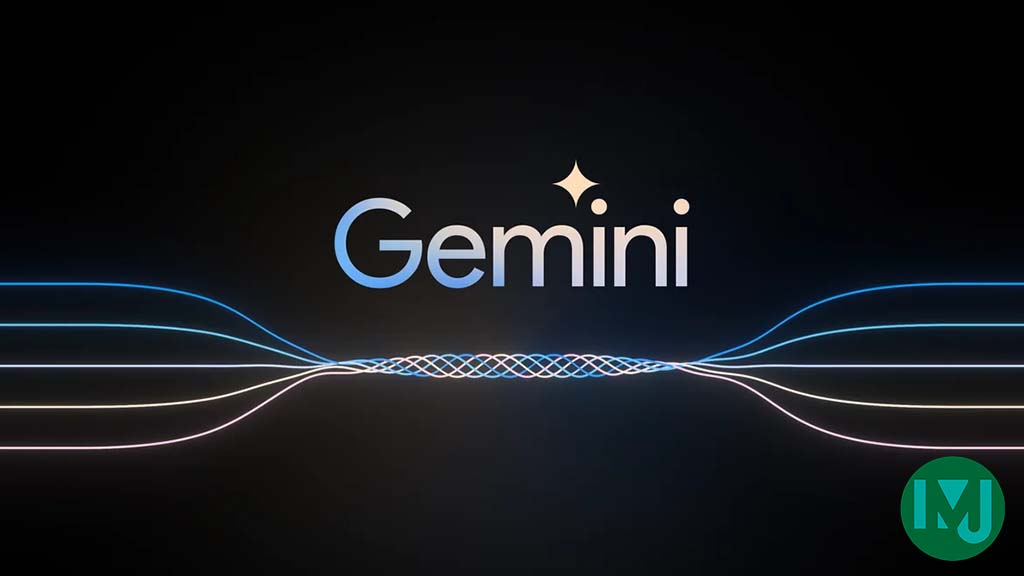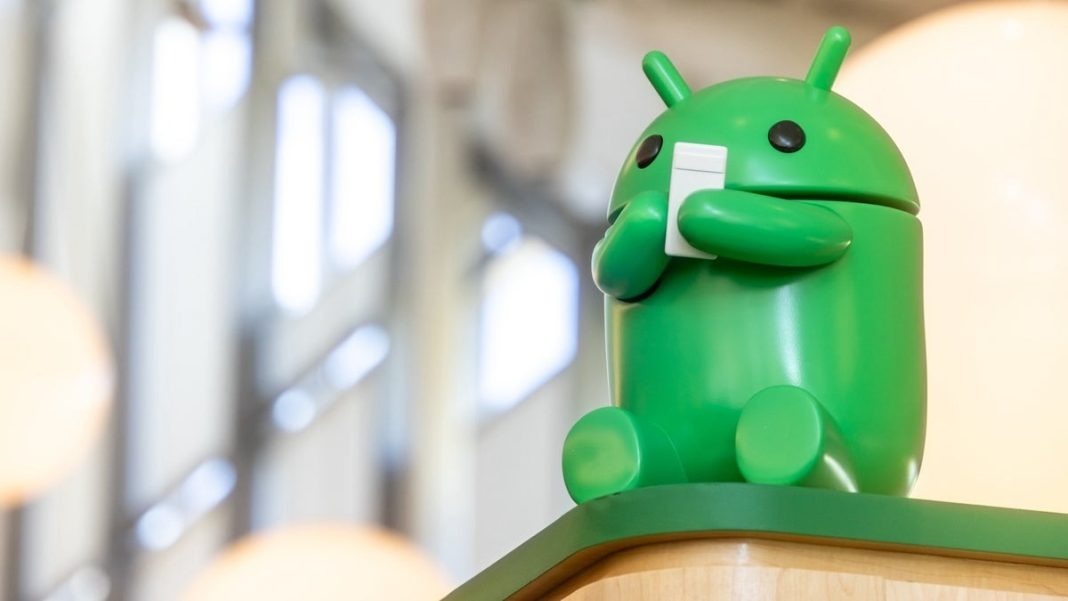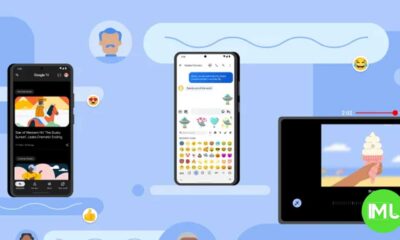Android
Google’s Gemini revamps Android experience and prepares Android 14 for older Chromecast models

Key Points:
- Google’s Gemini AI introduces a sleek floating panel on Android, enhancing user experience without interrupting ongoing tasks.
- The update includes a new YouTube feature for easy video summaries, boosting its usefulness for educational content.
- Older Chromecast models will receive Android 14, although some features will be exclusive to newer devices.
Google’s Gemini AI assistant is rolling out a new, user-friendly interface on Android devices. This update features a floating panel that is both visually appealing and functional. The panel includes a subtle glowing animation that activates when Gemini is called, making it easy to use without overwhelming the screen. The animation and layout are designed to complement your current activities, ensuring that Gemini can assist you without disrupting your workflow.
Unveiled at Google’s developer conference in May, this new interface is tailored for seamless multitasking. The panel provides useful information from Gemini while you continue working within your current app. If you prefer a more detailed view, a simple tap in the upper-right corner will expand the panel to full screen. Additionally, this interface integrates smoothly with Gemini’s image generation capabilities, allowing you to drag and drop images directly into apps like Gmail or Google Messages.
One of the standout features in this update is a new “Ask about this video” option for YouTube, replacing the older “Ask about this screen” prompt. This new feature is particularly useful for educational videos, allowing users to easily access summaries or ask questions about the content, making it easier to understand and retain information.
Overall, these enhancements mark a significant improvement in how Gemini interacts with Android users. The floating panel, in particular, is a smart addition that enhances the experience, making it easier to access AI-driven assistance on the go.
This update follows the recent release of Gemini Live, which introduced a more conversational interface for interacting with the AI. While Gemini Live offers more advanced features, such as natural conversation, it requires a Gemini Advanced subscription. In contrast, the new floating panel is available to all users, making it a more accessible option for many.
Currently, these new features are available to a limited group of users, but Google plans to expand access in the coming weeks.
In addition to Gemini’s updates, Google is also preparing to bring Android 14 to older Chromecast models, despite having recently launched the new Google TV Streamer. According to Android Authority, Chromecast with Google TV will receive the Android 14 update, even though the device has been discontinued. This was confirmed by a Google product manager during the Made by Google event, where the latest Pixel models and Pixel Watch 3 were also introduced.
While the new Google TV Streamer runs Android 14 natively and offers cutting-edge features, older Chromecast devices won’t support all the new functionalities. For instance, the ability to connect to the Thread border router, which allows for fast and secure connections to smart home devices, will be exclusive to the new Streamer.
The Android 14 update for Chromecast with Google TV (4K) will be its second major upgrade, following its initial release with Android 10 and a subsequent update to Android 12. The HD version, which launched later, came with Android 12 pre-installed. The 4K model will continue to receive security updates until September 2025, and the HD model until September 2027.
While Android Authority has confirmed that the update is on the way, the exact release date remains uncertain. However, it is expected to arrive soon.
Android
Android Tablets Poised for a Multitasking Revolution: Three Apps, One Screen

For years, Android users have enjoyed the convenience of multitasking, juggling between apps with relative ease. However, the core functionality of split-screen mode has remained largely unchanged, typically limiting users to two apps at once. While manufacturers have introduced their own enhancements, a unified, system-level solution for more robust multitasking has been notably absent.
But the winds of change are blowing. Whispers from the development of Android 16 suggest a significant shift: the potential for running three apps simultaneously on tablet displays. This development promises to redefine the tablet experience, unlocking new levels of productivity and convenience.
The Current Landscape of Multitasking:
The ability to run two apps side-by-side has proven invaluable across various screen sizes, from smartphones to foldable devices and tablets. Yet, the increasing size and capabilities of tablets have created a demand for more sophisticated multitasking. Imagine seamlessly managing a video call, browsing the web, and taking notes, all on the same screen. This is the promise of enhanced split-screen functionality.
Several Android manufacturers have already recognized this need and implemented their own solutions. Samsung’s One UI, for example, allows users to split the screen into three sections – two on one side and one on the other – and even offers pop-up views for added flexibility. Lenovo’s “PC Mode” introduces a desktop-like experience with floating windows, providing a different approach to multitasking. OnePlus has also made waves with its “Open Canvas” feature, found on the OnePlus Pad and Open, which offers a highly adaptable system for arranging apps, including support for three apps simultaneously. These implementations demonstrate the potential of enhanced multitasking and the clear user desire for such features.
Android 16: A Glimmer of Hope:
Now, it appears Google is poised to bring this advanced multitasking capability to the Android operating system itself. Emerging from the development of Android 16 is evidence of a new system designed to support three apps in split-screen mode. This discovery, unearthed by diligent observers, suggests a fundamental change in how Android handles multitasking on tablets.
While still in its nascent stages, this new system appears to function similarly to OnePlus’s Open Canvas. Early indications point to an intuitive interface that prompts users to place a third app within the existing split-screen setup. Imagine effortlessly dragging and dropping apps into designated areas, creating a customized workspace tailored to your needs. This would not only enhance productivity but also provide a more engaging and immersive user experience.
The Potential Impact:
The implications of this development are significant. A native, system-level implementation of three-app split-screen would benefit a wide range of devices, most notably the Pixel Tablet. It would also set a new standard for Android tablets, encouraging manufacturers to embrace and optimize for this enhanced multitasking capability. This would lead to a more consistent and powerful user experience across the Android ecosystem.
For users, this means greater flexibility and efficiency. Imagine researching a topic online while simultaneously composing an email and referencing a document. Or perhaps watching a tutorial video while practicing the steps in a separate app and taking notes in a third. The possibilities are vast.
Looking Ahead:
It’s important to remember that Android 16 is still under development. The features currently being explored may evolve or change before the final release. However, the evidence of a three-app split-screen system is a promising sign. The development of Android 16 is ongoing, with developer previews currently available and a beta program anticipated to launch soon. As we move closer to the official release, we can expect more details to emerge about this exciting new feature and the future of multitasking on Android tablets. This potential upgrade signifies a major step forward for Android tablets, transforming them into even more powerful and versatile tools for both work and play.
Android
Gemini app gets real-time news boost and Android 16 prepares for multitasking makeover

Gemini to Offer Up-to-the-Minute Information Thanks to AP Partnership
Google’s AI-powered information assistant, Gemini, is getting a major upgrade in the form of a new partnership with The Associated Press (AP). This collaboration will provide users with real-time news directly within the app, making it easier to stay informed on current events.
Split-Screen on Android 16: Borrowing the Best from OnePlus?
While Android has offered split-screen multitasking for some time, the upcoming Android 16 update may introduce a significant improvement inspired by OnePlus’ Open Canvas feature. This new system could allow users to run three apps simultaneously on their phones, with a focus app taking up 90% of the screen and a secondary app occupying the remaining 10%. The beauty lies in the ability to quickly enlarge the smaller app by simply tapping on it.
Looking Beyond Split-Screen: “Bubble Anything” for Even More Flexibility
Android 16 might not stop at a revamped split-screen. Leaks suggest Google is also developing a “bubble anything” feature, allowing users to run any app in a floating bubble that overlays other applications. This could be a game-changer for multitasking, offering even more freedom for managing multiple tasks simultaneously.
A Glimpse into Android 16’s Multitasking Future
With Android 16 still in its early stages of development, details remain scarce. However, the evidence suggests Google is prioritizing enhanced multitasking capabilities. From the potential adoption of a three-app split-screen system to the “bubble anything” feature, Android 16 might be a significant leap forward for power users who juggle multiple apps throughout the day.
Beyond Android Phones: Will Tablets See Similar Improvements?
While the focus here has been on smartphones, it’s worth considering how these multitasking enhancements might translate to Android tablets. With the introduction of desktop windowing support in Android 15, some might question the need for a revamped split-screen. However, the new split-screen mode offers a simpler user experience potentially integrated with the app pairs feature for state saving. While desktop windowing offers greater flexibility with handling more than three apps, the simpler split-screen could be a better fit for many users who don’t require extensive multitasking on their larger tablets.
Overall, the news surrounding Android 16 paints a promising picture for those who value multitasking capabilities on their devices. The collaboration with AP for real-time news in Gemini and the potential improvements to split-screen and app management are exciting developments to watch unfold in the coming months.
Android
Google app updates enhance navigation and focus on visual search

In the ever-evolving landscape of mobile technology, user experience is paramount. Google, a dominant force in the digital world, continues to refine its mobile app, introducing several key updates designed to enhance navigation, streamline search functionality, and prioritize visual discovery. These changes, ranging from interface tweaks to a renewed focus on Google Lens, reflect Google’s commitment to providing a seamless and intuitive mobile experience.
One of the most noticeable changes is the introduction of a new bottom toolbar within the Google app for Android users. This subtle yet significant shift in interface design aims to declutter the user interface and provide more convenient access to essential functions. Previously, controls such as closing the tab, minimizing the tab, accessing site information, sharing links, and adding to collections were all crammed into a top bar. This often resulted in a visually cramped space, making it difficult to even read the full page title.
The new bottom toolbar simplifies this experience by consolidating key actions – Save, Search, and Share – into a more accessible location. This change is particularly beneficial for one-handed use, making it easier to share articles or perform new searches based on the content being viewed. The toolbar intelligently disappears as the user scrolls, minimizing any impact on screen real estate. This new UI is currently in beta testing and is expected to roll out to the stable channel soon. It’s important to note that this update applies to pages opened within the Google app, including Discover articles and Search results, but not to pages opened through Google Lens or Circle to Search.
Beyond interface tweaks, Google is also placing a renewed emphasis on visual search with significant updates to Google Lens. Recognizing the growing popularity of visual search tools like Circle to Search, Google has redesigned the Lens experience to prioritize immediate camera access. Previously, launching Google Lens would open a gallery view, displaying existing images and screenshots with a small live preview at the top. This required an extra tap or swipe to activate the camera viewfinder.
Now, Google Lens launches directly into the camera viewfinder, allowing users to instantly capture and analyze real-world objects. This change streamlines the visual search process, making it faster and more intuitive. This update is available on both Android and iOS platforms, reinforcing Google’s commitment to visual search across its mobile ecosystem. This shift makes perfect sense; with Circle to Search becoming the go-to tool for on-screen visual searches, Lens can solidify its place as the primary tool for real-world visual exploration.
Further refinements to Google Lens include a circular preview of the last captured image, replacing the previous rounded square format. This small change adds a touch of visual polish to the interface. Additionally, Google has retained the history button, introduced earlier in the year, which allows users to easily revisit previous visual searches. These incremental improvements demonstrate Google’s ongoing dedication to refining the Lens experience.
In addition to these enhancements, Google has also been exploring advanced features within Lens. Last year, they streamlined voice input, allowing users to long-press the camera button to append text queries to their visual searches. Furthermore, through Search Labs, Google is testing video search functionality, pushing the boundaries of visual search capabilities.
While Google is making strides in mobile search and visual discovery, a recent report has shed light on the usage of in-car infotainment systems. According to the Morgan Stanley Audio Entertainment Survey, Android Auto usage has seen a slight decline year-over-year, while Apple CarPlay has experienced growth. This shift could be attributed to various factors, including users switching between Android and iOS devices or upgrading to vehicles with integrated systems that reduce reliance on Android Auto.
However, the report also reveals a significant success story for Google in the automotive space: YouTube Music. The streaming service has seen a surge in popularity among drivers, even on Apple CarPlay. This suggests that YouTube Music’s appeal transcends platform boundaries, offering a compelling listening experience for users regardless of their mobile operating system. The report indicates that YouTube’s in-car usage is on par with long-established services like SiriusXM and significantly ahead of competitors like Spotify and Apple Music. This data underscores the growing importance of streaming services in the automotive entertainment landscape and highlights YouTube Music’s success in capturing a significant share of this market.
In conclusion, Google’s recent updates to its mobile app and focus on visual search through Google Lens demonstrate a clear commitment to enhancing the user experience. By streamlining navigation, prioritizing visual discovery, and adapting to evolving user needs, Google continues to solidify its position as a leader in mobile technology. While challenges remain in the automotive sector with Android Auto, the success of YouTube Music highlights Google’s ability to innovate and capture new markets.
-

 Apps11 months ago
Apps11 months agoGboard Proofread feature will support selected text
-

 News11 months ago
News11 months agoSamsung USA crafting One UI 6.1.1
-

 News10 months ago
News10 months agoBreaking: Samsung Galaxy S22 may get Galaxy AI features
-

 News10 months ago
News10 months agoSamsung Galaxy S23 Ultra with One UI 6.1 and all S24 AI features revealed
-

 News11 months ago
News11 months agoOne UI 6.1 Auracast (Bluetooth LE Audio) feature coming to many Samsung phones
-

 News11 months ago
News11 months agoSatellite SOS feature coming to Google Pixel phones, evidence leaked
-

 Apps8 months ago
Apps8 months agoGoogle’s fancy new Weather app is finally available for more Android phones
-

 News11 months ago
News11 months agoGoogle Pixel evolves as Europe’s third best selling flagship






